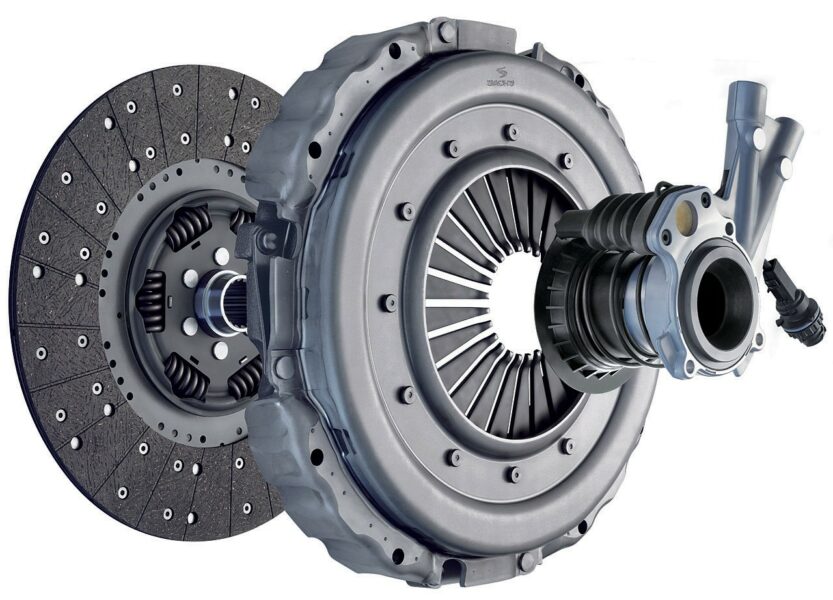
Clutch adjustment: sequence of actions depending on the situation
Content
While driving, every motorist expects an ideal response to his actions from his car: pressing the gas should accelerate the car, turning the steering wheel - change its direction, and pressing the clutch pedal - disconnect the box from the engine to change gear.
Any malfunction that slows down this reaction, or even blocks it, not only leads to discomfort, but also increases the likelihood of an accident. To eliminate unpleasant consequences, many mechanisms are equipped with regulation.
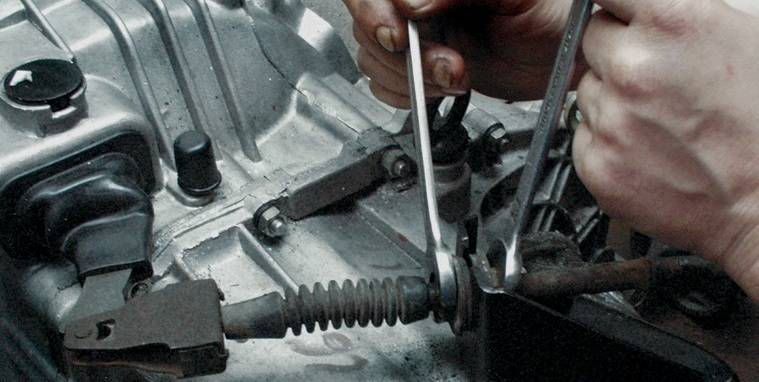
Let's take a look at some common clutch adjustment questions.
Clutch mechanism
First - briefly about how the mechanism works. How it works is reviewed in a separate review... In the classic version, the clutch has a single disc on which a friction lining is attached. He is called a follower. The flywheel plays the role of the leading - a disc with a wreath at the end, bolted to the flange of the shaker.
In a resting position, both discs are tightly pressed against each other. When the motor is running, the friction disc rotates with the flywheel because the pressure plate is pressing against it. The drive shaft of the transmission is installed in the drive disk using a splined connection. This element receives torque from the power unit.
The driver uses the clutch pedal to change gear without shutting down the engine. The cable attached to it moves the lever to which the fork and release bearing are connected. The force is applied to the pressure plate. It disconnects the friction disc from the flywheel. Thanks to this, the torque does not come from the motor, and the driver can safely change gear.
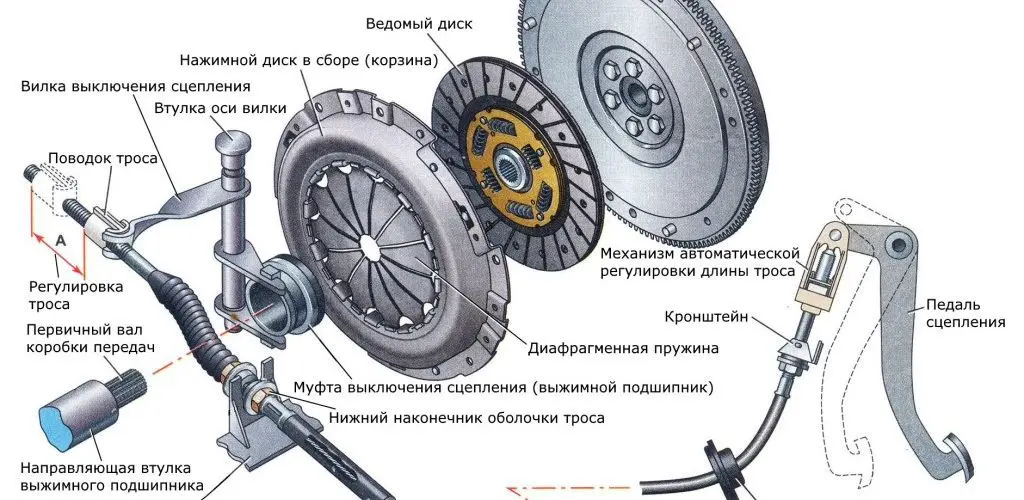
A conventional manual transmission (manual transmission) works according to this principle. As for the automatic transmission, there are several varieties of them. In them, the transmission of torque is provided by slightly different or fundamentally different mechanisms. For more details about the types of such transmissions, see here.
Many manual transmissions have a clutch pedal booster. It works on the same principle as the mechanical counterpart, only the force is increased by hydraulics. In this case, there are two cylinders at the ends of the line. The main one perceives the efforts from the pedal. When depressing the pedal, an increased force is transmitted to the slave cylinder, which is connected to the clutch fork lever.
Here's a quick overview of how the mechanism works:
Clutch diagnostic methods
Usually, the clutch of modern transmissions needs professional diagnostic equipment. But there are several symptoms by which the driver can independently understand that something is wrong with the clutch basket.
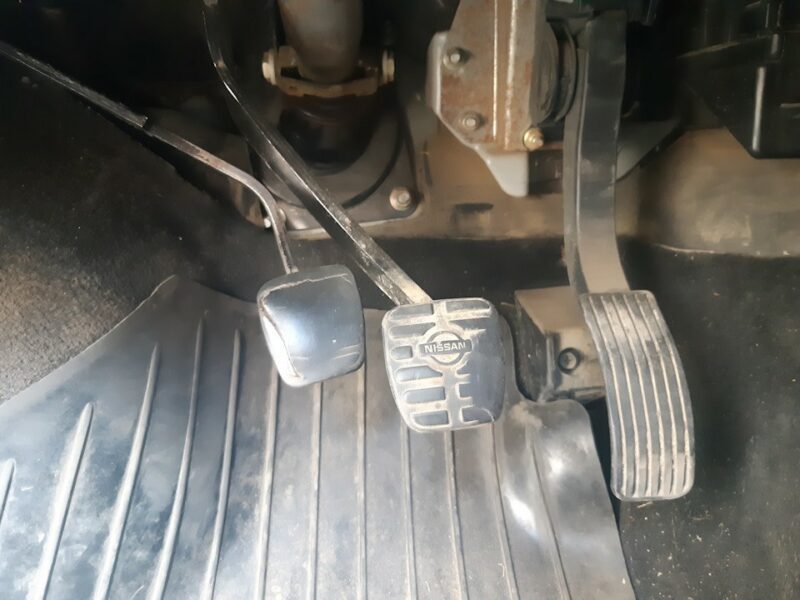

Here's how you can make sure your clutch needs adjustment:
- The engine is not running. How many times we depress the pedal. This action should not be accompanied by extraneous noises - knocks, clicks or creaks;
- We start the internal combustion engine. The box is in neutral. The pedal is depressed (all the way to the floor), the reverse speed is turned on. The sound of gear engagement should only appear. If the driver heard a crunch or a sound similar to the slipping of gears, then either the pedal does not fully squeeze the bearing, or one of the discs is worn out;
- The third method requires the vehicle to be in motion. The vehicle accelerates smoothly. The driver gradually shifts gears from first to third. At 3rd speed, the accelerator is pressed sharply. If the engine speed has jumped, but there is no dynamic acceleration, the discs slip. Often this procedure will be accompanied by a noticeable smell of burnt rubber.
The main signs by which you can understand that it is time to adjust the clutch
If during the movement of the vehicle the driver notices the following symptoms, he needs to carry out some diagnostic procedures to make sure that the mechanism needs adjustment:
- Slippage of the master and driven disc occurs;
- Vibrations are generated in the transmission, especially when driving;
- Noises from the clutch;
- By pressing the accelerator pedal, the driver hears the response of the engine (the speed rises), but noticeably less torque is supplied to the box (this happens if the pressure plate is worn out);

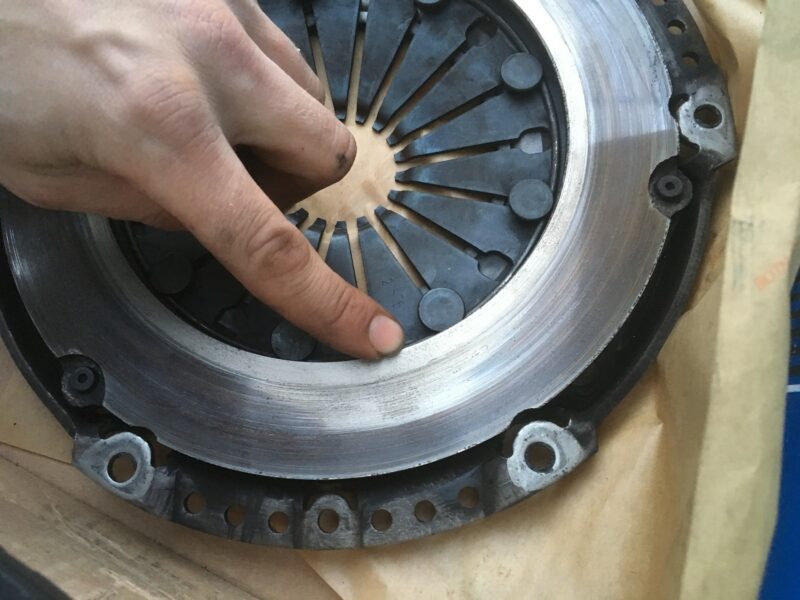
- The pedal amplitude has changed.
What happens if the clutch is not adjusted in time?
In case of careless handling of the vehicle, the driver may not notice in advance that the response of the transmission has decreased to his actions. If you ignore even minor changes, the following can happen:
- The friction disc will begin to slip. The torque will be delivered to the box with losses. Even if the pedal cable is subsequently adjusted correctly, the machine will still lose momentum because the disc engagement has decreased or disappeared altogether. As a result, it is difficult for the car to accelerate at first, but if the worn-out element is not replaced with a new one, it may be necessary to replace more expensive parts, for example, a scratched flywheel;
- No engagement between discs (or does not disappear with pedal depressing). In some gears, the driver will hear a strong crunch when moving the shift lever to the desired position. If this happens, you will need to adjust the free amplitude of the pedal;

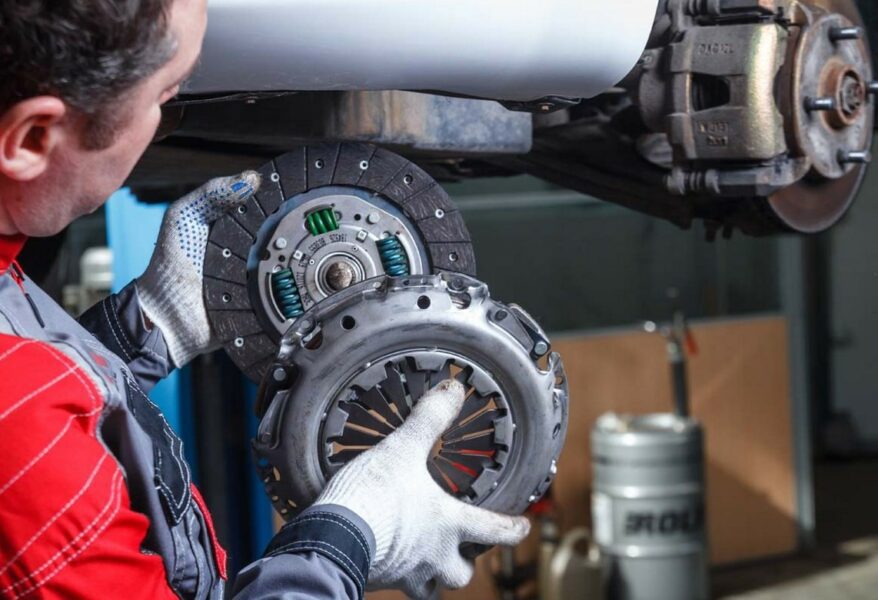
- Late or early hook. On a late toe, the mechanism is triggered when the pedal is almost released, and on an early toe, on the contrary, even in the lowest position. If you do not set this parameter, the car will start with a jerk, as if the driver were simply throwing the pedal abruptly. In addition to wear on parts of the box, basket and engine, this malfunction can lead to an accident, because the car starts moving too quickly.
Can the clutch be adjusted by myself?
Before proceeding with the adjustment, you need to fully make sure that the malfunction is connected precisely with the failure of the mechanism settings, and not with its breakdowns. If you are not sure of this, it is better to entrust the work to a specialist.
To perform the procedure yourself, you will need a tape measure, a lubricant (any to lubricate the threads near the nuts), pliers, open-end wrenches for 13, 14 and 17.
Clutch adjustment steps
Adjustment is possible on two types of clutches:
- On the mechanical one - the mechanism drive - a cable fixed on the device levers;
- On the hydraulic - the drive is activated due to the forces transmitted through a closed line (according to the principle of the brake system).
Further - in more detail about the adjustment of each of them.
Adjusting the mechanical clutch
The first step is to determine which parameter needs to be adjusted - so that the discs are coupled earlier or later. To do this, measure the distance from its site to the floor. Then we completely squeeze it out, and measure at what distance it is now. Subtract the last from the first value. This will be an indicator of free amplitude.
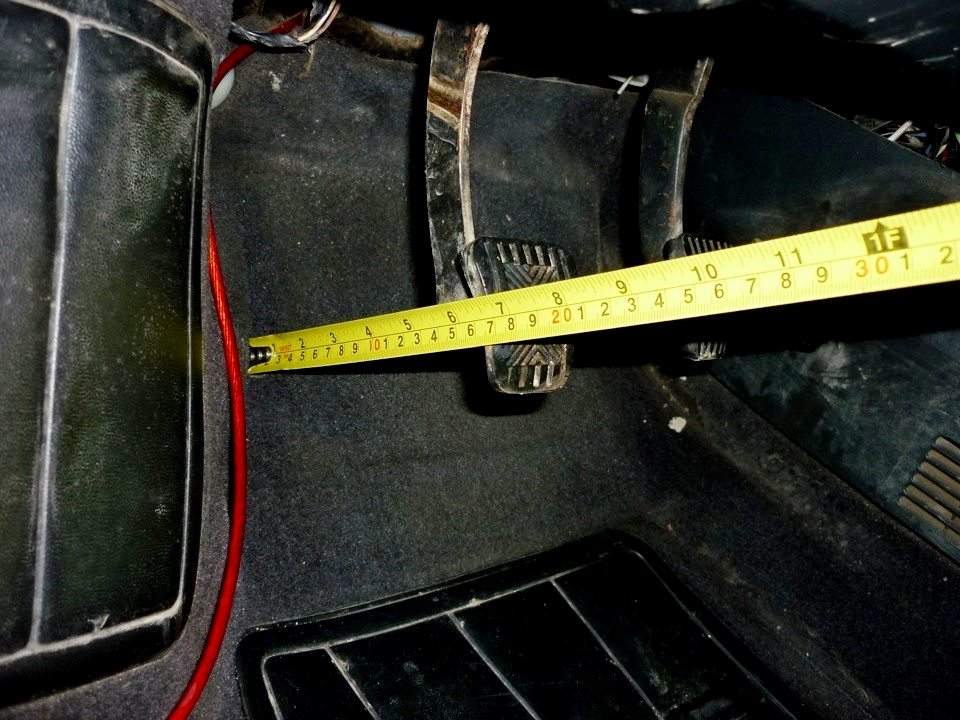

The standards can be found in the service literature. Most often it corresponds to 120-140 millimeters. This is the clutch engagement range. If the result obtained exceeds the norm, then the amplitude must be reduced, and if it is less, we must increase it.
The process itself is as follows:
- We are looking for a transmission lever. Sometimes it is enough to raise the hood for this (for example, in the VAZ 2108). It has a stem with fixing nuts;
- In some auto models, the cable mount can be removed by simply pulling it and removing it from the lever;
- The fixing nut is unscrewed;
- The second nut is an adjustment nut (the cable cover rests against it);
- To increase the amplitude, the nut must be turned in the direction of the pedal, and vice versa - so that the mechanism works a little earlier;
- We put the mount on the lever and repeat the measurement;
- Repeat the procedure if necessary;
- We install the mount on the lever and fix it with a lock nut.
Lubrication is needed to facilitate the movement of the adjusting elements.
Adjusting the hydraulic clutch
Usually this modification is not regulated because the free amplitude is compensated by the pressure in the system. However, some models of hydraulic systems have an adjusting element with a locknut located on the master cylinder or slave cylinder.
In the presence of these parts, the adjustment is carried out in the following sequence:
- At a low level of working fluid, the volume is replenished. Sometimes this is enough to restore the response of the mechanism;

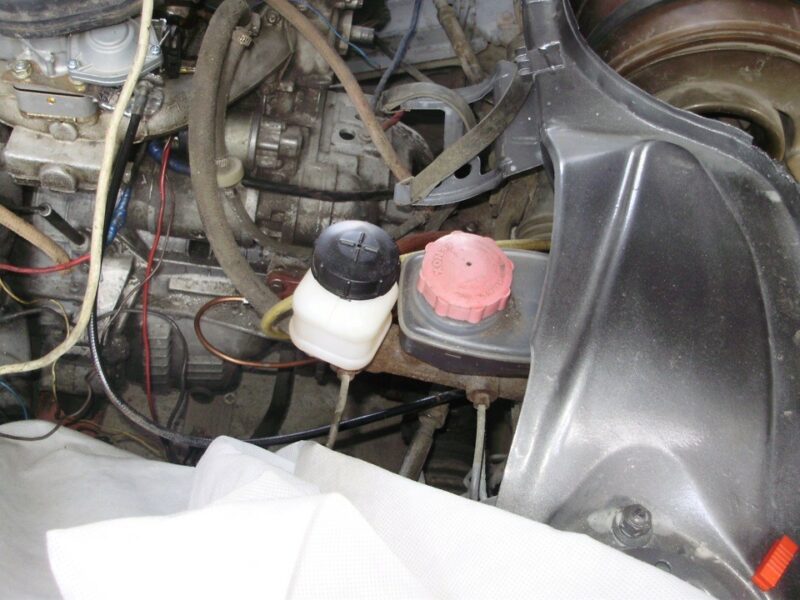
- We hang the car or bring it to the inspection pit;
- A working cylinder with a pusher is located under the box;
- Remove the spring from the fork;
- We push the plug, as it happens when the pedal is activated;
- Measurements are taken that are identical to how it is done in the case of a mechanical analogue. Only here is the pusher amplitude measured. The gap indicator should also be indicated by the car manufacturer;
- Next, you need to unscrew the lock nut;
- The adjustment nut turns towards the slave cylinder (to increase the clearance) or in the opposite direction (the clearance decreases);

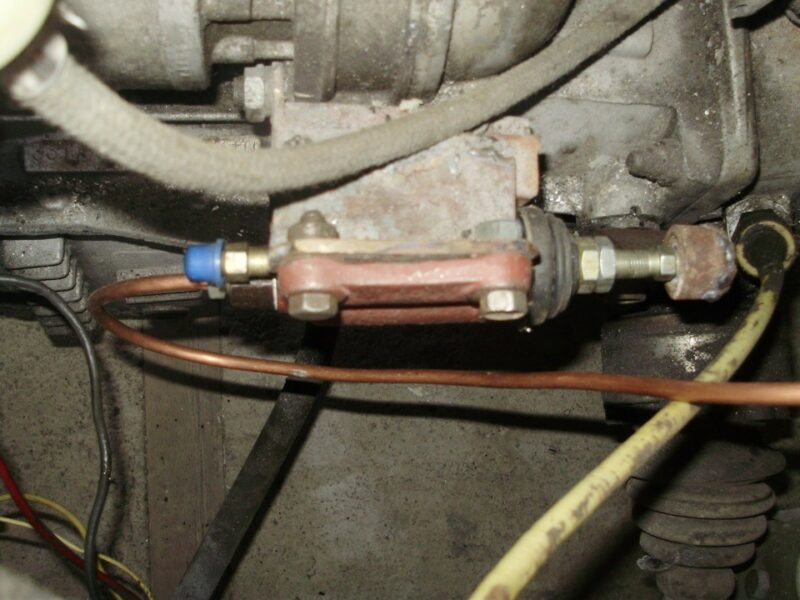
- We repeat the measurements and, if the standards are met, we clamp the mount.
Is the adjustment done differently on different car brands?
If the car is mechanically equipped, this setting is identical for all car models. On the automatic transmission, such a setting is not made, because the driver does not engage the clutch drive.
The only thing that can be adjusted at home without disassembling the basket is setting the optimal pedal amplitude. The drive disc must not engage the driven disc early or late so that the driver can release the pedal smoothly.
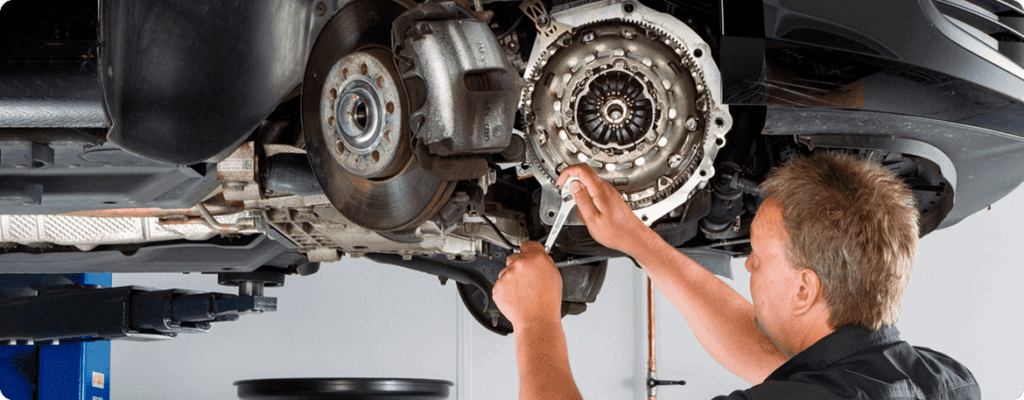

The only difference between the process on a separate car is the position of the adjusting mechanisms. In one car, it is enough to simply raise the hood and the cable goes to the box from above, and in the other, remove the air filter module or battery.
How to adjust the clutch pedal free play
Some car models, instead of adjusting on the fork arm, adjust using a similar design near the pedal itself. Be that as it may, the procedure is identical to those described earlier.
Here is a short video of how this happens in practice:


Watch this video on YouTube
Questions and answers:
How to adjust the clutch master cylinder? The spring is removed from the HZ bracket and from the fork. The gap between the pusher and the fork should be within 5mm. To establish a suitable clearance, it is necessary to unscrew / tighten the adjusting nut on the stem.
In what position should the clutch grip? Most motorists are guided by sensations: where it is convenient, but basically, the clutch should "grasp" in the interval from the lowest point to the middle of the pedal travel, but not at the very bottom.
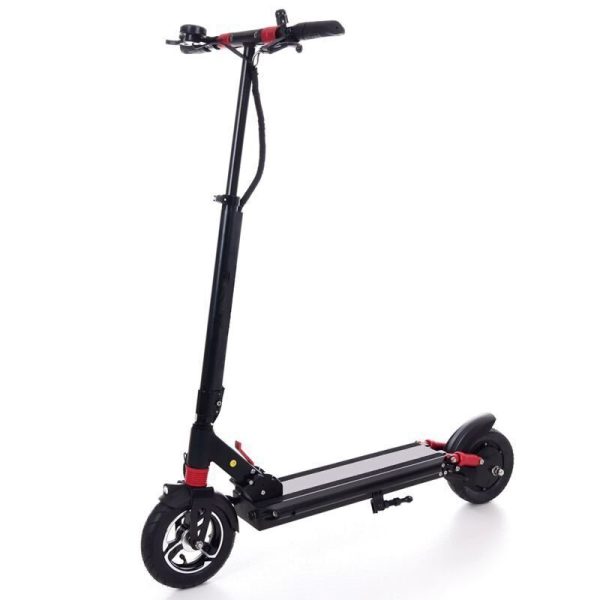
3 comment
Massimo
Seriously???
Natocagne macogne cabradaschi….
What the hell is this driving with a Russian drawing with a nail in the dust?
This is the result of the freedom of publication on the Internet.
Anyone, however incompetent they may be, can publish whatever they like, professing to be an expert in the most diverse subjects, when in real life they may not even know how to tie their shoes.
anonym
I agree with the previous comment
shaft
Anyone who is interested will find out whether it is with a nail or on a drawing board. No one in the West shows such things, only we and the Russians are connoisseurs and pencillers.